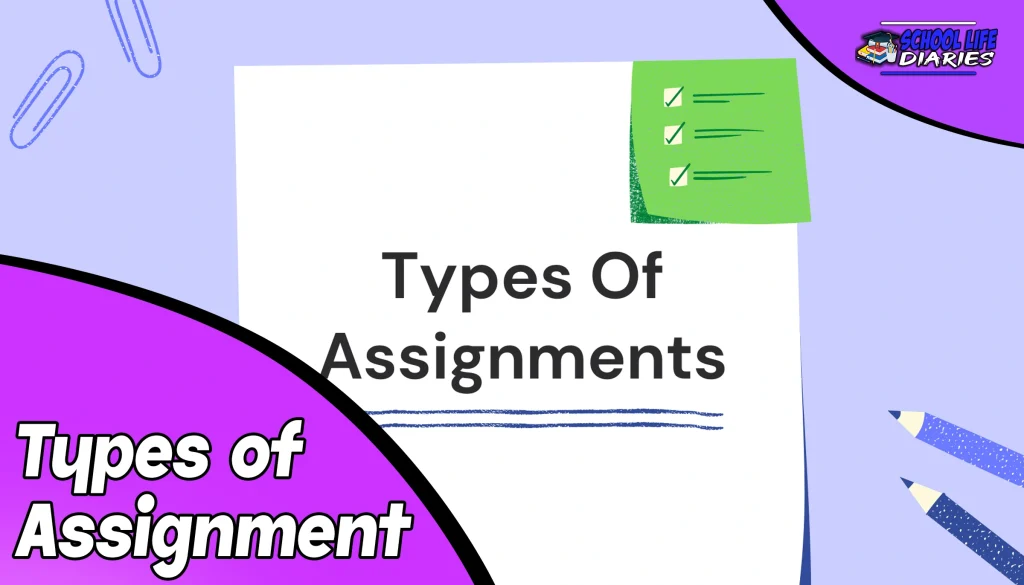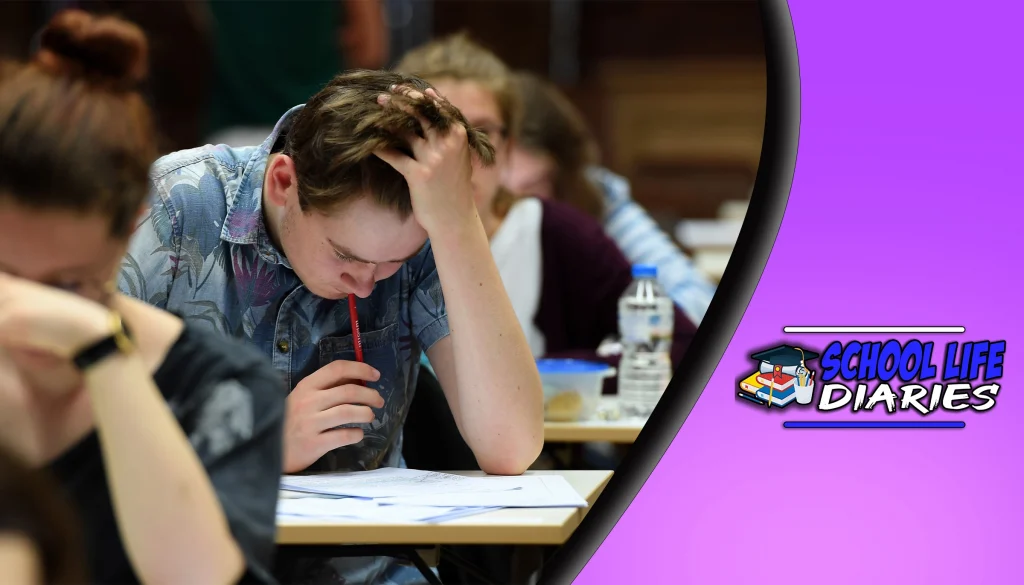Assignments in the academic world come in various forms and serve different purposes. They can be broadly categorized into different types of assignments written assignments, practical or experimental assignments, presentations, and group projects. Each type of assignment has its unique requirements and aims to evaluate specific skills and knowledge of students.
Academic assignments are an integral part of education and play a crucial role in assessing a student’s understanding, knowledge, and skills in various subjects. Assignments are designed to challenge students, enhance their critical thinking abilities, and encourage creativity. In this article, we will delve into the different types of assignments, and their definitions, and focus on creative writing assignments and reflective journal or diary entry assignments. Additionally, we will explore how group projects differ from individual assignments and shed light on the diverse landscape of academic assignments.
What is Assignment?
An assignment refers to a specific task or project given to individuals or groups with designated objectives and a set timeframe for completion. These tasks are a fundamental component of academic, professional, and personal development, serving distinct purposes in each context. In academics, assignments assess students’ comprehension and application of course materials through various forms such as essays, research papers, exams, or group projects. On the professional front, assignments align with job roles, contributing to organizational objectives. These tasks may range from individual projects to collaborative endeavors, often involving reports, proposals, or presentations.
Assignments serve several key purposes. Grades or performance evaluations often stem from these assessments. The structure of an assignment typically encompasses an introduction that clearly outlines the objectives, a body that presents the main content or analysis, a conclusion summarizing key points, and a reference section listing sources used, following a specified citation style. To excel in assignments, adhering to best practices is essential. This includes understanding the assignment requirements thoroughly, planning and organizing tasks effectively, conducting comprehensive research, drafting and revising iteratively, seeking feedback for improvement, and rigorously reviewing and editing before final submission.
What is a Creative Writing Assignment?
A creative writing assignment is a task that prompts individuals to engage in expressive and imaginative writing, often with the aim of fostering creativity, exploring personal thoughts, and honing literary skills. These assignments are prevalent in educational settings, particularly in courses focused on creative writing or literature. They can also be given in workshops, writing groups, or as personal projects. The essence of a creative writing assignment lies in the freedom and flexibility it offers to the writer, encouraging the use of their unique voice, perspective, and creativity.
These assignments can take various forms, such as short stories, poetry, essays, plays, or even experimental prose. The topic or theme is usually broad, allowing for interpretation and creative exploration. The instructions may involve specific elements like character development, setting, dialogue, or the incorporation of certain literary techniques.
In crafting a creative writing assignment, instructors or supervisors often consider the objectives they aim to achieve. They design prompts that stimulate creativity, challenge the writer’s skills, or align with a specific theme or literary genre. The assessment of creative writing assignments typically focuses on the writer’s ability to develop a captivating narrative, use language effectively, portray emotions, and adhere to the guidelines while embracing creativity.
Types of Assignment
- Essays: Essays are a common form of academic assignment, requiring students to articulate their ideas, arguments, and insights on a specific topic. Essays can range from persuasive, descriptive, narrative, or expository, and often follow a structured format with an introduction, body paragraphs, and a conclusion.
- Reports: Reports are detailed documents that present information, findings, or analyses related to a particular subject or research. They typically include an introduction, methodology, results, discussion, and conclusion sections.
- Case Studies: Case studies involve in-depth analysis of a particular case, situation, or individual. They aim to demonstrate a student’s ability to apply theoretical knowledge to real-world scenarios.
- Experiments and Practical Assignments: These assignments require students to perform experiments or practical tasks related to a subject, record observations, analyze results, and draw conclusions.
- Literature Reviews: Literature reviews involve summarizing and analyzing existing research and literature on a specific topic. It helps in understanding the current state of knowledge in a particular field.
What are the Different Academic Types of Assignments?
Academic assignments vary based on the subject, level of study, and specific course requirements. Some common types of academic assignments include:
- Research Papers: Research papers involve a deep investigation and analysis of a topic, supported by scholarly sources and evidence. They demonstrate a student’s ability to conduct comprehensive research and present their findings coherently.
- Thesis and Dissertations: Theses and dissertations are extensive research projects completed at the undergraduate, graduate, or doctoral levels. They require original research and contribute new knowledge to the academic field.
- Book Reviews: Book reviews assess a student’s understanding and critical evaluation of a particular book. They typically involve summarizing the book’s content, analyzing its themes, and providing an informed opinion.
- Homework Assignments: These are short tasks assigned regularly to reinforce learning and understanding of class material. Homework assignments are usually completed outside of regular class hours.
How do Group Projects Differ from Individual Assignments?
Group projects and individual assignments differ in several aspects, including the nature of work, collaboration, and individual responsibility.
– Nature of Work: In group projects, the work is distributed among team members, leveraging each member’s strengths. In contrast, individual assignments require a single student to complete the entire task independently.
– Collaboration: Group projects encourage collaboration and teamwork, where members contribute their ideas and skills to achieve a common goal. Individual assignments, on the other hand, rely solely on the efforts and capabilities of a single student.
– Decision Making: Group projects involve collective decision-making and consensus building, considering the input from all team members. Individual assignments allow for personal decision-making without the need for external input.
– Accountability: In group projects, team members are collectively accountable for the project’s success or failure. In individual assignments, the student is solely responsible for the outcome.
What is a Reflective Journal or Diary Entry Assignment?
A reflective journal or diary entry assignment is a structured or unstructured task that prompts individuals to record their thoughts, experiences, and reflections on a specific topic, event, or period of time in a personal journal-like format. This assignment encourages introspection, critical thinking, and the exploration of personal growth, emotions, and learning through written expression. Reflective journal entries can vary in terms of length, frequency, and format based on the assignment’s guidelines or the individual’s preferences.
The primary purpose of a reflective journal or diary entry assignment is to encourage self-awareness and deeper understanding. It provides a platform to articulate and organize thoughts and emotions, helping individuals make sense of their experiences and connect them to broader concepts or theories. This reflective process often leads to personal insights, enhanced learning, and an improved ability to deal with future situations.
The structure of a reflective journal entry typically involves recording the experience or event, followed by a thoughtful reflection on how the experience made the individual feel, what was learned from it, and how it relates to past experiences or future actions. The reflection may include self-assessment, analysis of strengths and weaknesses, and considerations of alternative perspectives or approaches.
In educational contexts, instructors may assign reflective journal entries to students in various disciplines such as psychology, education, nursing, or business. The topics for reflection can range from practical experiences in a field or clinical setting to responses to readings, lectures, or specific assignments. The assessment of reflective journal entries often focuses on the depth of reflection, the ability to connect experiences to relevant concepts or theories, and the clarity and coherence of the writing.
Conclusion: Types of Assignment
Assignments serve a dual purpose: assessing academic knowledge and fostering a spectrum of critical skills crucial for a well-rounded education. Beyond being tools of evaluation, they are platforms for the development of critical thinking, research abilities, effective communication, and creativity. Each type of assignment offers a unique avenue for students to demonstrate their understanding and enhance specific skills. Understanding the diverse types of academic assignments is fundamental for students embarking on their educational journey.
Creative writing assignments stand as the epitome of fostering creativity and self-expression. These tasks invite students to venture into the realms of imagination, shaping characters, plots, and narratives. Through these assignments, students not only get to showcase their literary prowess but also refine their ability to craft engaging stories that captivate readers. Moreover, they encourage originality and innovation, nurturing an environment where unique voices and styles can flourish.
Approaching each assignment with diligence is paramount. Students should carefully analyze the requirements, align their efforts with the objectives, and adopt effective planning and organizational strategies. Assignments should not be viewed merely as tasks to be completed but as opportunities for learning and personal development. By dedicating time and effort to each assignment, students can extract maximum educational benefits, ultimately enriching their academic journey.
In essence, academic assignments, in their varied forms, are essential components of the educational process. They are not only gateways to academic success but also catalysts for the development of critical life skills. Encouraging students to embrace these assignments with enthusiasm, creativity, and introspection can significantly enhance their overall learning experience and equip them for the challenges and opportunities that lie ahead in their academic and professional pursuits.










